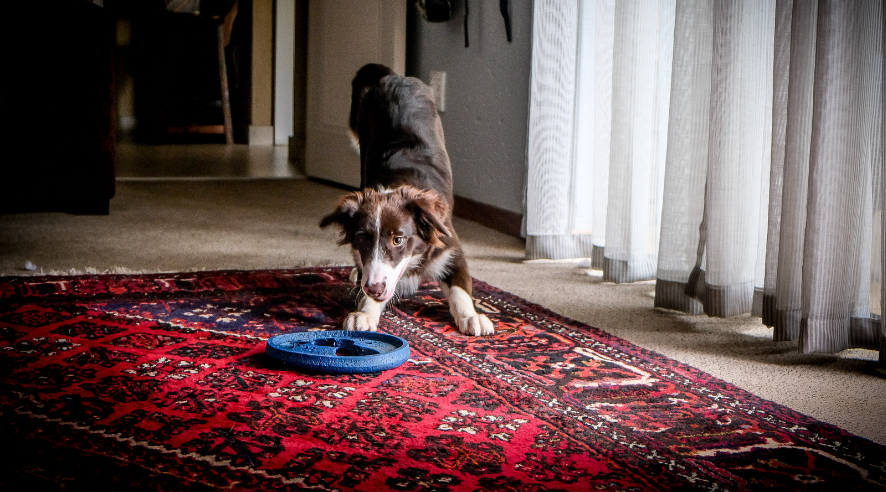The Perfect Area Rug: How to Choose and Style the Perfect One for Your Home
- 27 February 2022

Adding an area rug to a room can transform it from mundane to fabulous. With so many styles, materials, and sizes to choose from, finding the perfect area rug can be a daunting task. Whether you’re looking for a bold statement piece or a subtle touch of texture, this guide will help you choose the perfect area rug for your home.
Choosing the Right Size
One of the most important considerations when choosing an area rug is size. The right size can create balance and harmony in a room, while the wrong size can make a space look awkward and uninviting. To choose the right size, consider the size of your room, the furniture arrangement, and the purpose of the rug.
When choosing the right size of your area rug, it is essential to measure the space accurately. The rule of thumb is that your rug should be large enough to fit all your furniture on it. For example, in a living room, the front legs of your sofa and chairs should be on the rug, creating a cohesive look. In a dining room, your rug should be big enough to fit your table and chairs comfortably.
If you have a smaller space, a rug that is too large can make it feel cramped. In this case, a smaller rug that accentuates a specific area of the room can work well. Consider placing it under a coffee table or in front of a fireplace.
Material Matters
Area rugs are made from a variety of materials, each with its own unique characteristics. Wool is a popular choice because it’s durable and easy to clean. Silk is more delicate but has a luxurious sheen. Synthetic fibers like nylon and polyester are often more affordable and easier to clean than natural fibers.
When choosing the material of your area rug, consider the level of foot traffic in the room and the level of maintenance required. Natural fibers such as wool, silk, and cotton are durable and long-lasting but can be more expensive. Synthetic fibers like nylon and polyester are more affordable and easier to clean, making them an excellent choice for high-traffic areas.
If you’re looking for a more environmentally-friendly option, look for rugs made from sustainable materials like bamboo, jute, or recycled plastic.
Finding the Right Style
Area rugs come in a wide range of styles, from traditional and oriental to modern and abstract. When choosing a style, consider the overall aesthetic of your home and the mood you want to create in the room. A bold, graphic rug can add energy and excitement to a space, while a neutral, textured rug can create a calming, serene atmosphere.
The style of your rug should complement the overall aesthetic of your home. For a traditional look, consider an oriental or Persian rug. A modern space may benefit from a geometric or abstract pattern, while a coastal or bohemian-inspired home would look great with a rug featuring natural fibers and earthy tones.
If you’re unsure about which style to choose, a neutral rug can be a safe and versatile option. A solid rug in beige, gray, or cream can work with any color scheme and decor style.
Mixing and Matching
Mixing and matching patterns and textures can be a daunting task, but it’s also a great way to add interest and depth to a room. When choosing an area rug, consider the patterns and textures already in the space. If you have a lot of patterned upholstery, a solid rug can provide balance. If your furniture is more neutral, a patterned rug can add visual interest.
When it comes to mixing and matching patterns and textures, there are no hard and fast rules. However, there are a few guidelines to keep in mind to ensure a cohesive look. If you’re choosing a patterned rug, make sure the other patterns in the room are smaller and complementary in color. A solid rug can work well with a patterned wallpaper or upholstery.
To add texture, consider layering a smaller rug on top of a larger one, using different materials and patterns to create interest.
Layering
Layering rugs is a great way to add depth and texture to a space. A smaller, patterned rug layered over a larger, solid rug can create a cozy, inviting atmosphere. When layering rugs, make sure the colors and patterns complement each other and that the bottom rug is large enough to anchor the space.
Layering rugs is a great way to add depth and texture to a space. The key is to choose rugs that complement each other in terms of color and pattern. For example, a jute rug can provide a natural, neutral base, while a patterned wool rug adds interest and texture.
When layering rugs, make sure the bottom rug is larger than the top rug. If you’re using a patterned rug on top of a solid rug, make sure the solid rug is a few inches wider and longer than the patterned rug to create a border.
Maintenance
Finally, it’s important to consider the maintenance required for your area rug. Some materials and styles require more care than others. For example, a shag rug may look luxurious, but it can be difficult to clean. A low-pile rug, on the other hand, is easy to maintain but may not provide the same level of comfort.
The level of maintenance required for your area rug will depend on the material and style you choose. A wool rug will require more maintenance than a synthetic fiber rug, as it is more susceptible to stains and fading. A high-pile rug may require more frequent vacuuming than a low-pile rug.
Consider the level of maintenance you are willing to commit to when choosing your rug. If you have pets or children, you may want to choose a rug that is easy to clean and resistant to stains.
In conclusion, choosing the perfect area rug for your home can be a fun and exciting process. By considering factors like size, material, style, mixing and matching, layering, and maintenance, you can find a rug that not only looks great but also enhances the functionality of your space. With the right area rug, you can transform any room into a warm, inviting, and stylish oasis.




